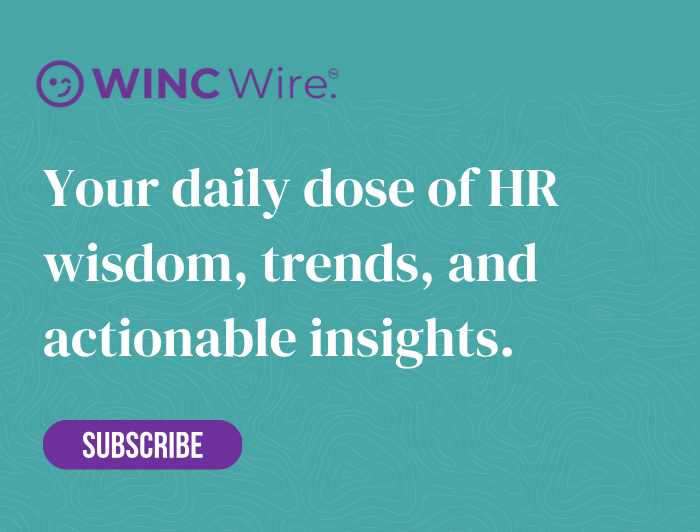Let’s be honest, a leadership change is rarely a quiet process, is it? Even in the most stable organisations, it sends ripples of uncertainty through the ranks. For your people, it triggers a cascade of personal and professional questions. For the business, it’s a clear point of risk. But for us, as HR leaders, it’s something else entirely: a critical opportunity to steer the organisation not just through a bumpy patch, but towards genuine transformation.
A transition at the top does more than just reshuffle the org chart; it puts the very integrity of your culture and the resilience of your people to the test. If we reframe it correctly, these moments stop being about crisis management and start being about cultural renewal and strategic realignment.
It always comes back to the people, doesn’t it?
The consequences of a leadership change are never contained within the boardroom. They flow out to every corner of the business. And quite naturally, people start asking: “Where do I stand? What does this mean for my team, my projects, my future here?”
It’s all too easy for a business to get lost in the mechanics of the transition; the announcements, the timelines, the succession planning. We can forget that beneath every box on that chart is a human being looking for a bit of stability. This is where our function must step in with real care.
The support you offer has to be more than just policy documents. It’s about providing reassurance, being visible on the floor, and deploying a heavy dose of emotional intelligence. When your people feel heard, respected and kept in the loop, they don’t just get through the transition; they actively participate in making it a success.
Your Culture: Is it an Anchor or a Liability?
Think of your organisation’s culture as its ballast. During a leadership change, it either keeps the ship steady or it exposes every single crack in the hull. So, the question you have to ask yourself is: will our culture hold up under this pressure?
A truly resilient culture is built on three pillars:
- Psychological Safety – Do people feel genuinely safe enough to ask the awkward questions, admit they’re uncertain, and take the time they need to adapt?
- Belonging – When a familiar face disappears from the top, a sense of unity becomes even more vital. Do your teams feel a shared purpose that transcends any one leader?
- Core Values – Leaders come and go. Your values shouldn’t. They are the true north that grounds your people when everything else feels like it’s shifting.
If you see these foundations starting to wobble, the transition is serving as your wake-up call. It’s a clear invitation to get in there and reinforce what your organisation truly stands for.
Cutting Through the Noise with Purposeful Communication
Botching the communication during a leadership handover isn’t just a missed opportunity; it’s a direct route to creating problems. In the silence, misinformation spreads like wildfire, disengagement quietly takes root, and you’ll soon see the impact on performance.
A well-thought-out communication plan does more than just distribute information; it builds confidence. Here’s what it should focus on:
- Strategic Sequencing
Who needs to know what, and crucially, in what order? Getting this wrong can cause havoc. - Transparency
Don’t try to spin a perfect story when you don’t have all the answers. People have a healthy respect for honesty, especially when things are uncertain. - Consistent Messaging
Every single leader, from the C-suite to the line managers, needs to be singing from the same hymn sheet. Consistency is key. - Human Connection
Yes, a well-written email is efficient, but we all know that a timely, personal conversation can be infinitely more powerful.
During uncertain times, clarity becomes your most valuable currency. You need to spend it wisely.
Don’t Fall into the ‘One Leader’ Trap
It’s a classic mistake: all the energy and focus get channelled into replacing the departing leader, while their wider team is left feeling adrift. As HR professionals, our job is to widen the lens.
This means you should be actively:
- Encouraging and fostering team collaboration to collectively fill any temporary leadership vacuum.
- Engaging your employees in co-creating what comes next, using feedback sessions, open forums, and shared objectives.
- Reinforcing that collective purpose that binds the organisation together, ensuring everyone stays aligned on the mission.
A truly successful leadership transition is never just about one individual; it’s about sustaining the momentum of the entire organisation.
Defining Success: It’s More Than Just Filling the Chair
It’s incredibly tempting to tick the “complete” box once a new leader is in place. But we know success isn’t just about filling a vacancy, it’s about setting the business on a new and better trajectory.
You need to define your success metrics right at the start:
- Employee engagement levels
- Staff retention rates across the affected teams
- The achievement of short-term strategic goals
Track these metrics, report back on them, and let them be the compass that guides the organisation’s next chapter.
The Real Opportunity: From Crisis Management to Strategic Design
What if we stopped viewing leadership change as a disruption to be managed and started seeing it as an evolution to be guided? What if we used the transition as a catalyst to reimagine the very structure of leadership itself?
Here’s how you can shift your own mindset from being reactive to visionary:
- Explore New Models
Could this be the moment to look at collaborative or distributed leadership frameworks that build greater future readiness? - Spot Emerging Talent
A transition creates a natural space for the next generation of leaders to step up and show what they can do. Be ready to spot them. - Stress-Test Your Culture
This is a live-fire exercise. Use the pressure of the change to see where your values hold firm and where they need to be shored up for the future.
When you look at it this way, a leadership change stops being a finish line and becomes a strategic pivot point for the entire business.
Your Role: From Firefighter to Architect
Change at the top of an organisation is inevitable. Widespread chaos, however, is entirely optional. When HR leads with clarity, a deep understanding of the culture, and a dose of courage, these transitions become more than moments of uncertainty; they become springboards to greater resilience, innovation and cohesion.
This isn’t about just getting through the storms. It’s about helping to build stronger ships.
So the next time a senior handover lands on your desk, pause and take a breath. It’s your cue to step into the moment, not as a responder reacting to events, but as a designer of the organisation’s future.
Let’s Keep the Conversation Going
If this way of thinking resonates with you, know that it’s just one part of a bigger, ongoing conversation about how we create workplaces that truly work for everyone.
Follow me on LinkedIn for more on leadership evolution, practical HR strategy, and how a people-first mindset creates future-ready organisations. One conversation, one strategy, one story at a time, let’s reimagine what work can be.






